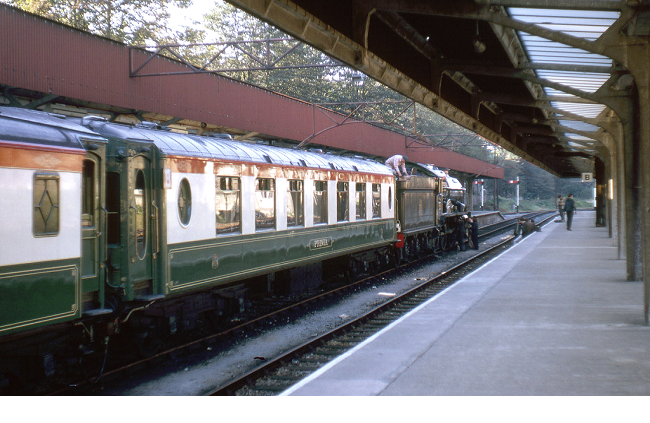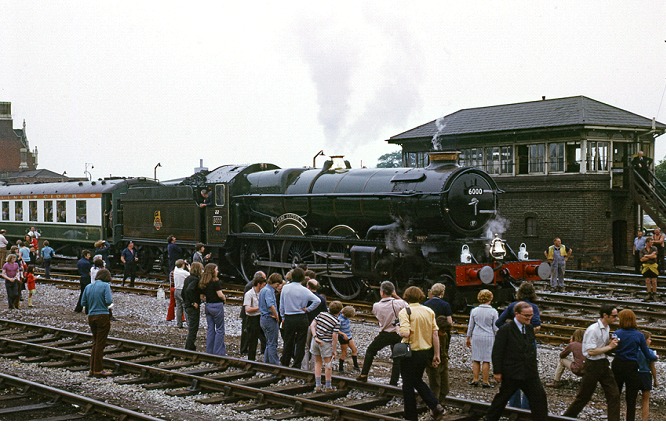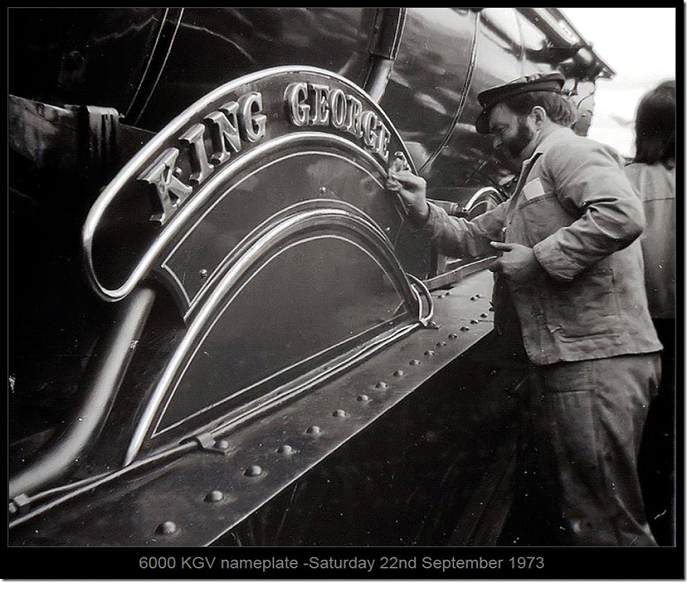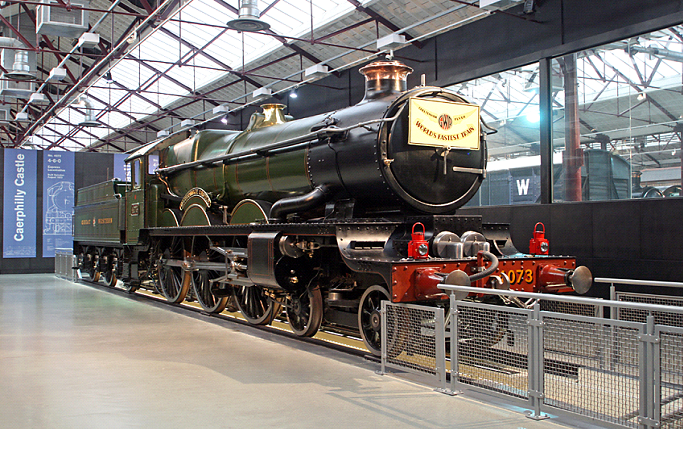Geoff Hawkes
Steam trains, steam rollers as used by road menders and traction engines doing odd bits of heavy work were a common sight in my early childhood and I can still remember the smell of them. I wonder what of our things will evoke such fond memories to the children of today in fifty or sixty years when they are gone?Alan Taylor
When she was young, my ex-wife’s grandfather would arrange for the family to get “priv” tickets, meet at Swindon station and board the service he was driving to Weston Super Mare. As a seven year old, she simply assumed that everybody’s grandfather would drive them to the seaside in a steam loco if they wanted a family day out.[Ed: See more about this in“Bits of Our History”]
Pat Heigham
I do so agree with Geoff Hawkes’ mention that the reminiscences should have been recorded.You don’t say what year this took place – maybe video handycams weren’t around? I should have loved to have shot on that.
There has been a super programme made with Go-Pro cams (?), think it was the Scotsman, which covered the work of the footplate crew.
Every kid wanted to be an engine driver in those days – I remember being taken up to the front of the train to say hello to the drivers who were unfailingly cheerful and chatty. My maternal grandfather had been an engineer of some description, and lived on Watford Way – one night I was taken to see a train dash across a bridge opposite his house. It was there and gone in a shower of sparks, but I think it could have been the Flying Scotsman.
He also took me to King’s Cross to see the trains – it had been raining and the carriages came in with water dripping off their gutters. Very evocative, and I remember wondering from where it was that they had come. Perhaps that was the first seeding of my interest and future love of travel to distant climes, subsequently fulfilled by the film industry!
There is a huge nostalgia for the age of steam, witness the healthy proliferation of preserved railways and the plethora of railway programmes on TV at this time.
Some work for ATV’s version of ‘Tonight’ could be great fun.
Despatched to Bulmer’s Cider factory at Hereford, the independent apple farmers were filmed bringing in their harvest for cider pressing. Having duly photographed the process, the PR chap suggested that we sample the product. Instructed to leave the building and walk towards a railway track, turn right, and we would come to their hospitality suite. Surprise – this turned out to be a three or four carriage train of beautifully restored Pullman coaches (one seating, one bar car, one dining car and one converted as a cinema). In an engine shed was a King class loco (King George V) with two ex-GWR drivers who painstakingly looked after it. The train was taken around the country to County Shows where there was a convenient rail siding nearby.
Quite brilliant!

Graeme Wall
A propos Pat’s Bulmers story, here is KGV with the Pullmans on one of its early main line trips in 1973.
David Newbitt
Also from 1973 – possibly the same occasion
Just look at the thickness of metal in those brass letters! They didn’t do things by halves in Swindon. There’s something about the industrious looking buffing up going on that serves as a reminder of the immense pride GWR men took in their machinery.
King George V for those not of the GWR persuasion was the flagship of God’s Wonderful Railway. She was regularly through Taunton Station, often on a stopping train, in the 1950’s when I, like most lads, was a frequent purchaser of a 1d platform ticket to indulge in train spotting. 13 coaches was the norm through the summer though more were sometimes encountered.
Seems to me some of us haven’t entirely grown up!
Bernie Newnham
When I was about 12, I was one of the regular group of trainspotters on the Bridle Path at Watford Junction. A place to gather and chat, with the odd train passing. Wait for the Midday Scot, then go home for lunch. Sometimes we’d get on our bikes and go somewhere else.A favourite was Old Oak Common roundhouse, where they complexly ignored boys wandering around. Once, 6000 was sitting there, so we climbed into the cab. Completely ignored.
Dave Newbitt
You’re one up on me there Bernie – the GWR staff at Taunton were mustard at chasing small boys off.Only once did I ever make it to the engine shed (MPD to the purists I guess), but looking back it was a potentially dangerous area with umpteen sidings, constant shunting and the coaling stage close by.
Alan’s 4073 Caerphilly Castle is something I very much enjoyed reading about. She was one that I saw many, many times and in later years I went to see her in the Science Museum and eventually took my son to share the experience. Old tech maybe, but he was enthralled, as I believe many youngsters are when close up to steam locomotives.
Graeme Wall
Here’s 4073 at Swindon museum.

Nick Ware
Since we all love steam…I once had a thoroughly enjoyable day filming on the Swindon and Cricklade railway. The object of the exercise was to re-create a shot in (if I recall correctly) a Charlie Chaplin film. In that shot, a steam loco comes hurtling towards the camera, directly behind a person standing on the track, who steps out of the way at the very last microsecond.
Our re-creation involved a setup where the camera is adjacent to the track, but at right angles to it, together with the actor. On the track is a huge glass mirror at 45 degrees, giving the camera a head-on shot.
We did several practice runs, driver POVs and GVs without the mirror in place (my chance to ride on a tank engine). Then the magic moment. Mirror in place, camera running, and along comes the loco and smashes through the mirror. (Cut to shot of loco carrying on down the track). The shot worked perfectly, but I felt sorry for whoever had to pick up the shattered glass!
Nowadays it would be boring CGI, but it was more spectacular the old way. It was one of those days when you can’t believe you’re actually being paid to have such fun!
Graeme Wall
A real case of it being all smoke and mirrors!Alan Taylor
Getting paid to have fun certainly makes up for some of the more tedious times.Pat Heigham
To echo Nick’s remark at being paid to have fun – I found that working on documentaries, to experience places and manufacturing systems that to a member of the public, would be denied, was fascinating.One job involved shooting in Pilkington’s glass factory, where they made huge sheets of plate glass for shop windows etc.
The molten glass flowed out of the furnace on to a conveyor belt, and as it rapidly cooled, a laser scanned the sheet, looking for flaws. When one was spotted, a computer calculated how many standard size panels could be made from the last flaw location, and a motorised diamond cutter whipped across to cut the glass. Any short ends, were shot into a trench, as the belt tipped down to discard them. The smashing sound of the spare bits of glass was satisfyingly wonderful!



